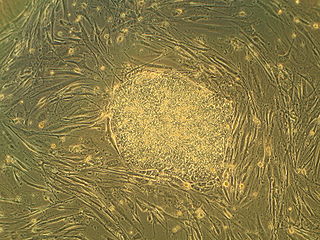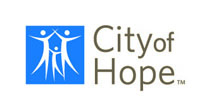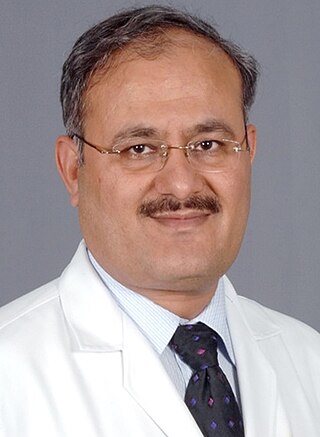The National Institute of Arthritis and Musculoskeletal and Skin Diseases (NIAMS) is one of the institutes and centers that make up the National Institutes of Health, an agency of the United States Department of Health and Human Services (HHS).
The University of Texas Southwestern Medical Center is a public academic health science center in Dallas, Texas. With approximately 23,000 employees, more than 3,000 full-time faculty, and nearly 4 million outpatient visits per year, UT Southwestern is the largest medical school in the University of Texas System and the State of Texas.

AABB is an international, not-for-profit organization representing individuals and institutions involved in the field of transfusion medicine and biotherapies.
The California Institute for Regenerative Medicine (CIRM) is a state agency that supports research and education in the fields of stem cell and gene therapies. It was created in 2004 after 59% of California voters approved California Proposition 71: the Research and Cures Initiative, which allocated $3 billion to fund stem cell research in California. In 2020 voters approved Proposition 14 that allocated additional funds to CIRM.

Regenerative medicine deals with the "process of replacing, engineering or regenerating human or animal cells, tissues or organs to restore or establish normal function". This field holds the promise of engineering damaged tissues and organs by stimulating the body's own repair mechanisms to functionally heal previously irreparable tissues or organs.

The Miller School of Medicine, officially Leonard M. Miller School of Medicine, is the University of Miami's graduate medical school in Miami, Florida. Founded in 1952, it is the oldest medical school in the state of Florida.
Stem-cell therapy uses stem cells to treat or prevent a disease or condition. As of 2016, the only established therapy using stem cells is hematopoietic stem cell transplantation. This usually takes the form of a bone marrow transplantation, but the cells can also be derived from umbilical cord blood. Research is underway to develop various sources for stem cells as well as to apply stem-cell treatments for neurodegenerative diseases and conditions such as diabetes and heart disease.

City of Hope is a private, non-profit clinical research center, hospital and graduate school located in Duarte, California, United States. The center's main campus resides on 110 acres (45 ha) of land adjacent to the boundaries of Duarte and Irwindale, with a network of clinical practice locations throughout Southern California, satellite offices in Monrovia and Irwindale, and regional fundraising offices throughout the United States.

Anthony Atala is an American bioengineer, urologist, and pediatric surgeon. He is the W.H. Boyce professor of urology, the founding director of the Wake Forest Institute for Regenerative Medicine, and the chair of the Department of Urology at Wake Forest School of Medicine in North Carolina. His work focuses on the science of regenerative medicine: "a practice that aims to refurbish diseased or damaged tissue using the body's own healthy cells".

Sanford Burnham Prebys is a 501(c)(3) non-profit medical research institute focusing on basic and translational research, with major research programs in cancer, neurodegeneration, diabetes, infectious, inflammatory, and childhood diseases. The institute also specializes in stem cell research and drug discovery technologies.
The Center for Stem Cell and Regenerative Medicine (CSCRM) is a medical research institution specializing in stem cell and other cell therapy research and treatments, located in Cleveland, Ohio. They specialize in basic and clinical research programs, biomedical and tissue engineering programs, and the development and administration of new therapies to patients.
Autologous immune enhancement therapy (AIET) is a treatment method in which immune cells are taken out from the patient's body which are cultured and processed to activate them until their resistance to cancer is strengthened and then the cells are put back in the body. The cells, antibodies, and organs of the immune system work to protect and defend the body against not only tumor cells but also bacteria or viruses.
Genital regeneration encompasses various forms of treatment for genital anomalies. The goal of these treatments is to restore form and function to male and female genitalia by taking advantage of innate responses in the body. In order to do this, doctors have experimented with stem cells and extracellular matrix to provide a framework for regenerating missing structures. More research is needed to successfully move the science from laboratory trials to routine procedures.

The Centre for Regenerative Medicine (CRM) is a stem cell research centre at the University of Edinburgh in Scotland, dedicated to the study and development of new regenerative treatments for human diseases. The centre forms part of the university's Institute for Regeneration and Repair and is part of the BioQuarter cluster at Little France.
The International Society for Stem Cell Research (ISSCR) is an independent 501(c)(3) nonprofit organization based in Evanston, Illinois, United States. The organization's mission is to promote excellence in stem cell science and applications to human health.
Lorenz Studer is a Swiss biologist. He is the founder and director of the Center for Stem Cell Biology at Memorial-Sloan Kettering Cancer Center in New York City. He is a developmental biologist and neuroscientist who is pioneering the generation of midbrain dopamine neurons for transplantation and clinical applications. His expertise in cell engineering spans a wide range of cells/tissues within the nervous system geared toward disease modeling and exploring cell replacement therapy. Currently, he is a member of the Developmental Biology Program and Department of Neurosurgery at Memorial Sloan-Kettering Cancer Center and a Professor of Neuroscience at Weill Cornell Medical College in New York City, NY.

Virender Singh Sangwan is an Indian ophthalmologist and the Dr. Paul Dubord Chair professor and director of the L. V. Prasad Eye Institute, Hyderabad. Known for his research on limbal stem cells, Sangwan is the founder secretary and an adviser of the Uveitis Society of India. The Council of Scientific and Industrial Research, the apex agency of the Government of India for scientific research, awarded him the Shanti Swarup Bhatnagar Prize for Science and Technology, one of the highest Indian science awards for his contributions to Medical Sciences in 2006.
The stem cell secretome is a collective term for the paracrine soluble factors produced by stem cells and utilized for their inter-cell communication. In addition to inter-cell communication, the paracrine factors are also responsible for tissue development, homeostasis and (re-)generation. The stem cell secretome consists of extracellular vesicles, specifically exosomes, microvesicles, membrane particles, peptides and small proteins (cytokines). The paracrine activity of stem cells, i.e. the stem cell secretome, has been found to be the predominant mechanism by which stem cell-based therapies mediate their effects in degenerative, auto-immune and/or inflammatory diseases. Though not only stem cells possess a secretome which influences their cellular environment, their secretome currently appears to be the most relevant for therapeutic use.

Graziella Pellegrini is an Italian Professor of Cell Biology and the Cell Therapy Program Coordinator at the University of Modena and Reggio Emilia. She has developed and championed cell therapy protocols in hospitals across Italy.

The Eli and Edythe Broad Center of Regenerative Medicine and Stem Cell Research at UCLA, also known as the UCLA Broad Stem Cell Research Center, is a biomedical research center at the University of California, Los Angeles that focuses on stem cell research. The center's more than 250 faculty members represent the UCLA professional schools as well as the College.









